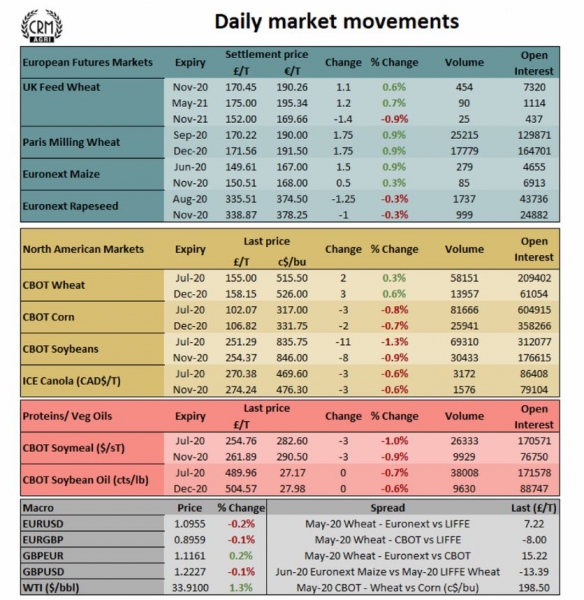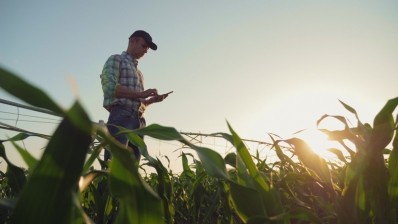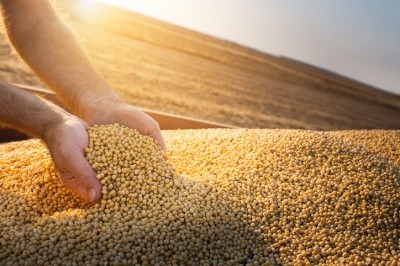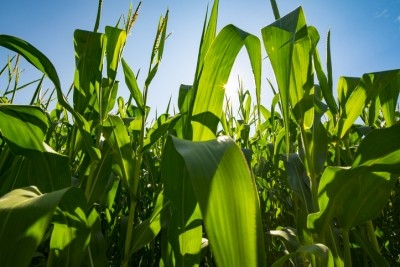AMIS sees volatility in feed demand, record maize output, recovery in soybean production
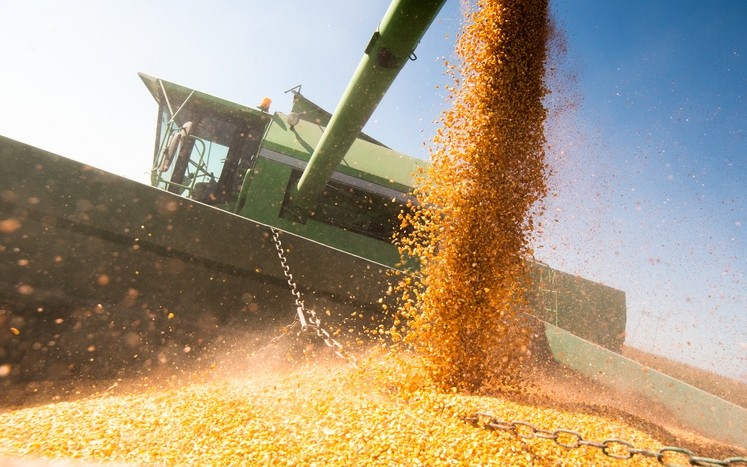
“Widespread lockdowns, social distancing measures and market closures resulted in substantially reduced food service sales and depressed demand for meat. In addition, many slaughterhouses have been struggling to implement adequate health safety standards for their workers. In view of ample feed supplies, particularly in the US, the pace and extent of recovery in the livestock sector will have an important bearing on food commodity prices, particularly on maize and feed wheat,” according to the AMIS report, which was published yesterday [June 4].
In its latest global supply and demand estimates the AMIS said the outlook for global wheat production in 2020 has dampened somewhat since last month, but that early forecasts point to record maize and rice outputs and a recovery in soybean production.
The Agricultural Market Information System (AMIS) is an inter-agency platform to enhance food market transparency and policy response for food security. It was launched in 2011 by the G20 ministers of agriculture following the global food price hikes in 2007/08 and 2010. Bringing together the principal trading countries of agricultural commodities, AMIS assesses global food supplies, focusing on wheat, maize, rice and soybeans, and looks to provide a platform to coordinate policy action in times of market uncertainty.
Source: AMIS
“Despite the many uncertainties stemming from economic and health implications of the COVID-19 pandemic, stronger trade dynamics are expected for all AMIS crops in the new season (2020/21) along with generally improved demand prospects. With the exception of soybeans, inventories of all other AMIS crops are also set to remain high or increase.”
Analysts, CRM AgriCommodities, in a note on the AMIS estimates, said the organization, by placing global maize production at 1207.1MT, has created an even greater headache for grain markets, as it is 20.2MT higher than the US Department of Agriculture (USDA) forecast last month and nearly 40MT greater than the recent one from the International Grains Council (IGC).
“Global soy estimates have also provided a bearish oilseed market outlook, at 364.8MT, 2MT more than the USDA,” added the UK commodity market analysts.
AMIS outlook
Wheat
- Wheat production in 2020 could fall below last year’s level following this month’s downward revisions in the EU, the Russian Federation and Ukraine mostly on unfavorable weather conditions.
- Utilization in 2020/21 also forecast to decline compared to 2019/20, as both feed and industrial use are expected to fall.
- Trade forecast for 2020/21 scaled up m/m, largely on higher projected imports by Iran, Sudan and Egypt; export prospects trimmed for the EU, the Russian Federation and Ukraine, but raised for Australia, Argentina and Canada.
- Stocks (ending in 2021) forecast higher than last month resulting in a y/y gain of 1.5%, with China responsible for most of the y/y expansion as well as the m/m increase in the forecast.
Maize
- Maize 2020 production to exceed the 2019 record significantly - by 5.6%. Record harvests expected in the US, Canada, and Ukraine, and near-record in Brazil and Argentina.
- Utilization in 2020/21 forecast to recover from the reduced level in 2019/20 on expectation of a rebound in industrial demand, especially for production of ethanol in the US, and growth in feed use, especially in China.
- Trade for 2020/21 (July/June) to expand slightly from 2019/20, supported by ample export availabilities and relatively low prices.
- Stocks (ending 2021) set to reach an all-time high, after shrinking for two consecutive seasons, largely driven by a projected rise in US maize inventories of over 50%.
Soybeans
- Soybean 2020/21 production to recover from the 2019/20 drop, assuming a return to average yields and a moderate increase in plantings; the rebound would be led by the US, although gains are also expected for Brazil and Argentina.
- Utilization in 2020/21 to resume growing after the near-stagnation in 2019/20; the rise is expected to originate primarily in China, but also in Brazil, Argentina and the US.
- Trade in 2020/21 (Oct/Sept) is forecast to keep expanding at a rate of 2–3%; the y/y rise would be supported by the recovery in demand from China, while the US would account for most of the anticipated rise in global shipments.
- Global inventories (2020/21 carry-out) are tentatively forecast to decrease slightly, with additional drawdowns in the US outweighing modest replenishments in China and Brazil.
